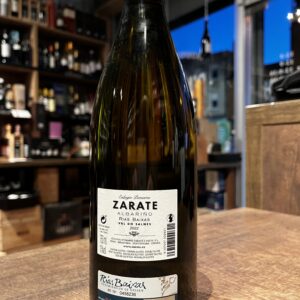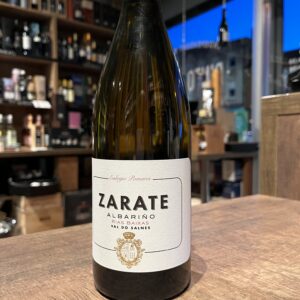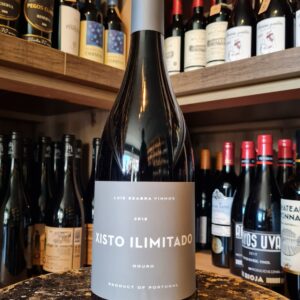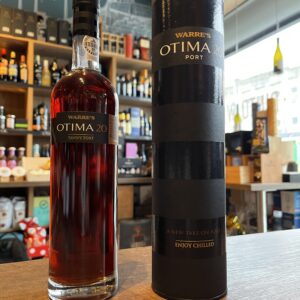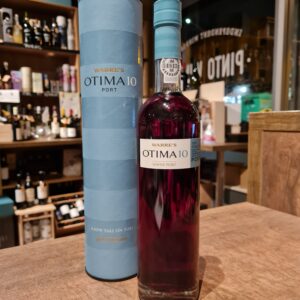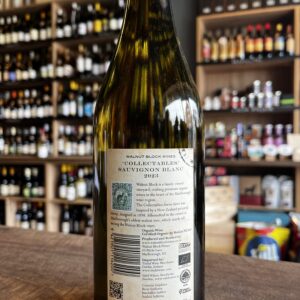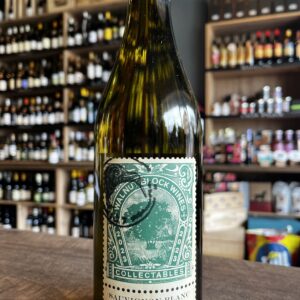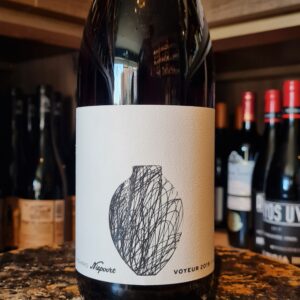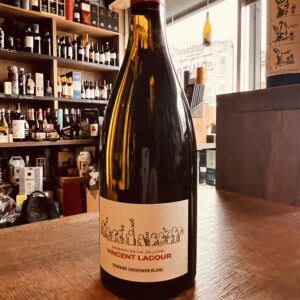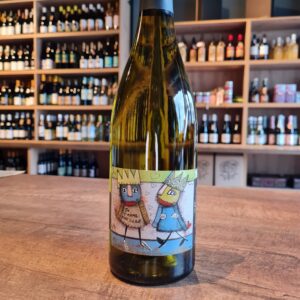-
Out of stock
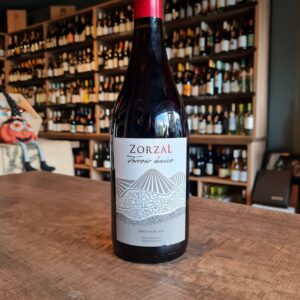
Founded in 2008 to promote the un-explored wine region of Gualtallary. The project is benefitting from investment in the best equipment and team possible. This new project is based on traditional winemaking, with medium scale production. Juan Pablo Michelini is responsible for the core of the concept, which revolves around majority of work being done in the vineyards. This combined with minimal intervention winemaking, best reflects the Gualtallary terroir.
Gualtallary is a remote place in the pre Andes, located in the Tupungato Department in the Northernmost sector of the Uco Valley in Mendoza. It is the highest altitude zone in the region, 1,200 to 1,600m above the sea level.
It has alluvial, primarily sandy soils with calcareous deposit and sectors with a presence of smooth round granitic riverbed stones, covered by calcium carbonate. The vineyard where this variety is grown is situated 1300 metres above sea level. It is a young vineyard, planted on chalky soils, with a very pronounced slope. This helps to keep the ground healthy, because there is no accumulation of water or frosts. The climate is mountainous, so we have a very wide temperature range, resulting in grapes with thicker skins considering it is a Pinot Noir.
The wines have lively, slightly austere profile, reflecting the soils and the altitude of the area. This hand harvested, single vineyard from Gualtallary is 100% Pinot Noir and is completely un-oaked to let the fruit driven quality of the wine shine. Great with and without food
-
Out of stock
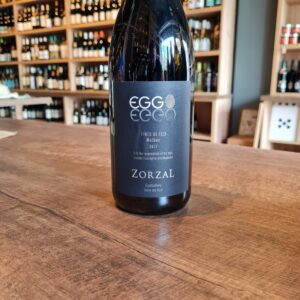 Zorzal, the Argentinian wine brand, was established in 2008, to reflect the immense wine potential of the Gualtallary region to the entire world. Ever since its inception, the group has been working hard so that the wines created here are true representations of the unique natural extravaganza of the Gualtallary region. Located in Tupungato towards the north of the Uco Valley in the Mendoza Province, this region is known for its high-altitude vineyards. Here, the vineyards are planted at a height of around 1200 to 1600m above sea level, which makes them the best place to produce terroir wines, the speciality of the Zorzal label. The Zorzal winery is set up in such a way that it uses sophisticated technology to ensure that the grapes are processed naturally with minimal use of machinery. The winery is constructed on four levels, to allow for natural transportation of the grapes with the help of gravity, so that the dependence on pumps would be reduced to a considerable extent. The use of roll fermenters, cement eggs and other advanced machinery for the grinding, fermenting and guarding processing ensure that the flavor and intensity of the fruits are retained even when the wines are bottled. The temperature-controlled French oak barrels, foudres and cement eggs used in the winery, help to keep the balance, purity, life and minerality of the wines intact. The Eggo line of wines is the modern range of wines that use cement eggs for fermentation and ageing. The conceptual range of wines aren’t limited by the Gualtallary region and are created by passionate winemakers.
Zorzal, the Argentinian wine brand, was established in 2008, to reflect the immense wine potential of the Gualtallary region to the entire world. Ever since its inception, the group has been working hard so that the wines created here are true representations of the unique natural extravaganza of the Gualtallary region. Located in Tupungato towards the north of the Uco Valley in the Mendoza Province, this region is known for its high-altitude vineyards. Here, the vineyards are planted at a height of around 1200 to 1600m above sea level, which makes them the best place to produce terroir wines, the speciality of the Zorzal label. The Zorzal winery is set up in such a way that it uses sophisticated technology to ensure that the grapes are processed naturally with minimal use of machinery. The winery is constructed on four levels, to allow for natural transportation of the grapes with the help of gravity, so that the dependence on pumps would be reduced to a considerable extent. The use of roll fermenters, cement eggs and other advanced machinery for the grinding, fermenting and guarding processing ensure that the flavor and intensity of the fruits are retained even when the wines are bottled. The temperature-controlled French oak barrels, foudres and cement eggs used in the winery, help to keep the balance, purity, life and minerality of the wines intact. The Eggo line of wines is the modern range of wines that use cement eggs for fermentation and ageing. The conceptual range of wines aren’t limited by the Gualtallary region and are created by passionate winemakers. -
Out of stock
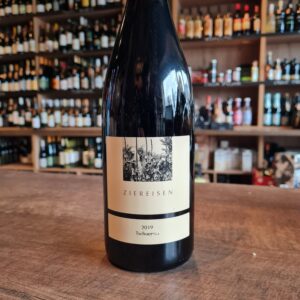 The Ziereisen winery in Efringen Kirchen in the Markgräflerland in Baden has meanwhile become an institution in its own right. Hanspeter Ziereisen originally trained as a carpenter and is therefore a real career changer who has never trained as a winemaker. His parents ran a mixed farm with pigs, cows and 0.5 hectares of vineyards. Overall, the place was characterized by part-time winegrowers who gave their grapes to the cooperative. The successor to the farm was initially uncertain, since none of the children wanted to continue it. In 1991, Hanspeter followed in his parents' footsteps with the clear goal of turning it into a winery. The small area yielded a first vintage of just 6000 bottles in 1993. Acquisitions and leases followed, and over time the business grew to today's 21 hectares. Hanspeter was interested in wine from an early age and so he tried a lot of the most interesting wines in the world. This is how he discovered his love for the red Burgundy. These are still the heart of the company today. With his style, Hanspeter Ziereisen encountered a lot of resistance. An individualist, as fellow winemakers call him, who doesn't want to produce pleasing wines, but independent ones. Spontaneous fermentation, long maceration times, long yeast storage, no filtration and the use of large and small wooden barrels - all this characterizes his style. This stubbornness or the clear definition of one's own style was also punished in the official wine testing. His wines did not fit the classic German profile and could therefore only be sold as country wines. Hanspeter Ziereisen stayed with his line and today his wines are their own brand. In the meantime a conscious decision in order to be able to design the wines in a way that corresponds to the philosophy and to be able to place the character of the wines in the foreground.
The Ziereisen winery in Efringen Kirchen in the Markgräflerland in Baden has meanwhile become an institution in its own right. Hanspeter Ziereisen originally trained as a carpenter and is therefore a real career changer who has never trained as a winemaker. His parents ran a mixed farm with pigs, cows and 0.5 hectares of vineyards. Overall, the place was characterized by part-time winegrowers who gave their grapes to the cooperative. The successor to the farm was initially uncertain, since none of the children wanted to continue it. In 1991, Hanspeter followed in his parents' footsteps with the clear goal of turning it into a winery. The small area yielded a first vintage of just 6000 bottles in 1993. Acquisitions and leases followed, and over time the business grew to today's 21 hectares. Hanspeter was interested in wine from an early age and so he tried a lot of the most interesting wines in the world. This is how he discovered his love for the red Burgundy. These are still the heart of the company today. With his style, Hanspeter Ziereisen encountered a lot of resistance. An individualist, as fellow winemakers call him, who doesn't want to produce pleasing wines, but independent ones. Spontaneous fermentation, long maceration times, long yeast storage, no filtration and the use of large and small wooden barrels - all this characterizes his style. This stubbornness or the clear definition of one's own style was also punished in the official wine testing. His wines did not fit the classic German profile and could therefore only be sold as country wines. Hanspeter Ziereisen stayed with his line and today his wines are their own brand. In the meantime a conscious decision in order to be able to design the wines in a way that corresponds to the philosophy and to be able to place the character of the wines in the foreground. -
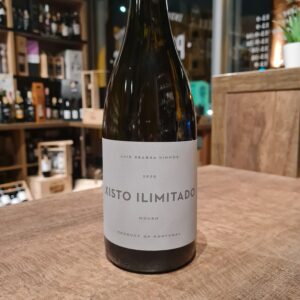 Another under the radar Portuguese White. This drop is now considered one of the new best contemporanean whites in Portugal. Produced by Luis Seabra, who worked for more than 10 years as an oenologist for Dirk Niepoort and finally started to follow his own path in 2012. The name he gives to his wines is indicative of his vision of wine: Xisto (Schist). He makes very pure wines that reflect their terroir. Luis Seabra sets a new standard in the Douro with his pure wines. Xisto Ilimitado, is a Portuguese analogue of the idea of a "village-level" Burgundy. A blend of six varieties planted in three sub-areas of the Douro, Ilimitado is a glimpse of the appellation's schist soil. Luis Seabra, has concentrated his production on the different soil types of the valley. Bright, concentrated and fresh, Xisto Ilimitado is an excellent introduction to the new Douro. Vineyards located in Cima Corgo. The vines are between 30 and 45 years old, planted in micaceous schist at an altitude of 500 to 600 m, and are a sub-region that experiences extreme highs and lows in terms of temperature, with one of the largest day-night temperature deltas in Portugal. As such, the fruit experiences an extended resting period. Annual rainfall of 400 mm typical of the region. Goes wonderfully with roasted poultry, white fish and seafood, and especially with the spiciest preparations
Another under the radar Portuguese White. This drop is now considered one of the new best contemporanean whites in Portugal. Produced by Luis Seabra, who worked for more than 10 years as an oenologist for Dirk Niepoort and finally started to follow his own path in 2012. The name he gives to his wines is indicative of his vision of wine: Xisto (Schist). He makes very pure wines that reflect their terroir. Luis Seabra sets a new standard in the Douro with his pure wines. Xisto Ilimitado, is a Portuguese analogue of the idea of a "village-level" Burgundy. A blend of six varieties planted in three sub-areas of the Douro, Ilimitado is a glimpse of the appellation's schist soil. Luis Seabra, has concentrated his production on the different soil types of the valley. Bright, concentrated and fresh, Xisto Ilimitado is an excellent introduction to the new Douro. Vineyards located in Cima Corgo. The vines are between 30 and 45 years old, planted in micaceous schist at an altitude of 500 to 600 m, and are a sub-region that experiences extreme highs and lows in terms of temperature, with one of the largest day-night temperature deltas in Portugal. As such, the fruit experiences an extended resting period. Annual rainfall of 400 mm typical of the region. Goes wonderfully with roasted poultry, white fish and seafood, and especially with the spiciest preparations -
 Wine is cheaper than Therapy! We put together these great wines, 3 whites and 3 reds that would put a smile on anyone's face, any day of the week. These wines can be enjoyed with or without food, but we always recommend a nibble. On the whites: Muralhas Vinho Verde - Monção e Melgaço has been producing wines and recognized for it since Roman occupation times, but was with Afonso III, 5th King of Portugal(1210-1279) that signed a ”Foral” that conceded Monção e Melgaço habitants the owners of the local wine and therefore they produced it with pride as they do today. The wine is made from the Alvarinho (predominant) and Trajadura varieties, indigenous to Portugal and the region, more specifically. The dry Muralhas de Moncao Vinho Verde never seems intrusive, but is soft, elegant and harmonious with no wood whatsoever. The wine goes well not only as an aperitif, but also with salads, seafood, fish dishes and white meat. Vitese Colomba Bianca Grillo Biologico- Grillo is the flagship of Sicily's indigenous white varieties, with its aromatic and floral nose. Fresh and harmonious on the well-structured palate, the Vitese Grillo has a long and elegant finish. Lovingly white, Lovingly good !! Bardos Rueda Verdejo- This artisan verdejo is part of the reason the Spanish Rueda region has become quite popular. Made unapologetically, you will find yourself like a true "Bard" drinking this wine. Delicious! On The Reds El Castro de Valtuille Joven - Made by the great Raul Perez. Fresh, mineral-tinged redcurrant and cherry scents that show very good clarity. Tangy, focused and pure on the palate, offering intense flavors of bitter cherry and red berry preserves. Shows a light touch that's quite pinot-like, along with a touch of smokiness that carries through a long, mineral-driven finish. If you want to show somebody what the Spanish region of Mencia smells, feels and tastes like, serve this one. Adega de Penalva Dão 'Indigena' Tinto -Adega de Penalva wines are delicious everyday examples of one of Portugal’s most intriguing appellations — the Dão. Perched above the Dão river itself as it snakes through its granite valleys, the Adega de Penalva is one of the leading cooperatives in the area, boasting around a thousand member growers. It’s important to note, though, that the average holding per member amounts to barely over a hectare—a figure that reminds us how tenaciously much of rural Portugal clings to its old ways. (On that note, all fruit destined for the ‘Indigena’ bottlings is hand-harvested.) Since its founding in the 1960s, the Adega has been collecting its members’ grapes and producing clean, characterful wines with a minimum of fuss. Aromas of leather and blueberries and notes of dark fruits with cherry and raspberry. Tank N32 Primitivo Appassimento IGT - Couldn't finish this wine case without bringing out the guns. This passionate and very well intended Italian red impresses with its perfect combination of elegance and strength. The bouquet reveals aromas of ripe cherries, juicy plums and dried fruit. In particular figs, dates and raisins come to mind. Has a dense and concentrated character. The pleasant and equally subtle residual sweetness gives this red wine a wonderful velvetiness. The long finish of Tank No 32 is carried by delicate notes of nougat and dark chocolate.
Wine is cheaper than Therapy! We put together these great wines, 3 whites and 3 reds that would put a smile on anyone's face, any day of the week. These wines can be enjoyed with or without food, but we always recommend a nibble. On the whites: Muralhas Vinho Verde - Monção e Melgaço has been producing wines and recognized for it since Roman occupation times, but was with Afonso III, 5th King of Portugal(1210-1279) that signed a ”Foral” that conceded Monção e Melgaço habitants the owners of the local wine and therefore they produced it with pride as they do today. The wine is made from the Alvarinho (predominant) and Trajadura varieties, indigenous to Portugal and the region, more specifically. The dry Muralhas de Moncao Vinho Verde never seems intrusive, but is soft, elegant and harmonious with no wood whatsoever. The wine goes well not only as an aperitif, but also with salads, seafood, fish dishes and white meat. Vitese Colomba Bianca Grillo Biologico- Grillo is the flagship of Sicily's indigenous white varieties, with its aromatic and floral nose. Fresh and harmonious on the well-structured palate, the Vitese Grillo has a long and elegant finish. Lovingly white, Lovingly good !! Bardos Rueda Verdejo- This artisan verdejo is part of the reason the Spanish Rueda region has become quite popular. Made unapologetically, you will find yourself like a true "Bard" drinking this wine. Delicious! On The Reds El Castro de Valtuille Joven - Made by the great Raul Perez. Fresh, mineral-tinged redcurrant and cherry scents that show very good clarity. Tangy, focused and pure on the palate, offering intense flavors of bitter cherry and red berry preserves. Shows a light touch that's quite pinot-like, along with a touch of smokiness that carries through a long, mineral-driven finish. If you want to show somebody what the Spanish region of Mencia smells, feels and tastes like, serve this one. Adega de Penalva Dão 'Indigena' Tinto -Adega de Penalva wines are delicious everyday examples of one of Portugal’s most intriguing appellations — the Dão. Perched above the Dão river itself as it snakes through its granite valleys, the Adega de Penalva is one of the leading cooperatives in the area, boasting around a thousand member growers. It’s important to note, though, that the average holding per member amounts to barely over a hectare—a figure that reminds us how tenaciously much of rural Portugal clings to its old ways. (On that note, all fruit destined for the ‘Indigena’ bottlings is hand-harvested.) Since its founding in the 1960s, the Adega has been collecting its members’ grapes and producing clean, characterful wines with a minimum of fuss. Aromas of leather and blueberries and notes of dark fruits with cherry and raspberry. Tank N32 Primitivo Appassimento IGT - Couldn't finish this wine case without bringing out the guns. This passionate and very well intended Italian red impresses with its perfect combination of elegance and strength. The bouquet reveals aromas of ripe cherries, juicy plums and dried fruit. In particular figs, dates and raisins come to mind. Has a dense and concentrated character. The pleasant and equally subtle residual sweetness gives this red wine a wonderful velvetiness. The long finish of Tank No 32 is carried by delicate notes of nougat and dark chocolate. -
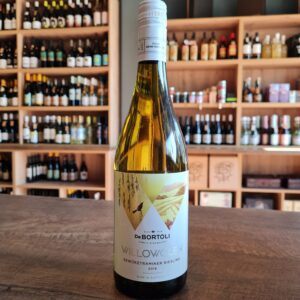 Vegan Gewurztraminer/ Riesling blend. Rose petal aromas with a hint of spice and fresh citrus. The palate is sweet, with rosewater Traminer characters complemented by the Riesling adding a citrus freshness. Try with spicy pork buns or if you're adventurous, venison salad with Thai herbs or spicy food in general. Did I mention this wine is Vegan?
Vegan Gewurztraminer/ Riesling blend. Rose petal aromas with a hint of spice and fresh citrus. The palate is sweet, with rosewater Traminer characters complemented by the Riesling adding a citrus freshness. Try with spicy pork buns or if you're adventurous, venison salad with Thai herbs or spicy food in general. Did I mention this wine is Vegan? -
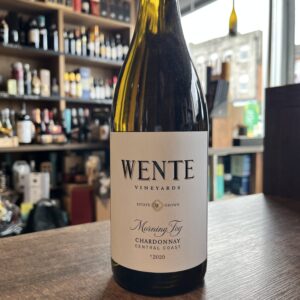 Estate Grown Morning Fog Chardonnay is named for the morning coastal fog pushed by Pacific wind streams into the bowl of the San Francisco Bay. This daily phenomenon moderates the climate to produce excellent, beautifully balanced Chardonnay.Wente Vineyards is one of the oldest, family run wineries, in America having been established in 1883. The Estate extends to some 3000 acres, 2000 in the San Francisco Bay appellation and 1000 acres in Arroyo Seco, Monterey to the south.Pioneers of the Californian Chardonnay clone Wente claim 80% of all Californian Chardonnay is from the Wente original clone. The family, German in origin, has long been innovators introducing stainless steel fermentation tanks in the 60’s and introducing varietal labelled wines as long ago as the 1930’s. Today, fifth generation winemaker Karl D. Wente carries on the family winemaking tradition. Such a smooth wine is delicious to enjoy alone at any time, but if you prefer to pair it, go for light flavoured meals like white meats, pastas, risottos with no added spice.
Estate Grown Morning Fog Chardonnay is named for the morning coastal fog pushed by Pacific wind streams into the bowl of the San Francisco Bay. This daily phenomenon moderates the climate to produce excellent, beautifully balanced Chardonnay.Wente Vineyards is one of the oldest, family run wineries, in America having been established in 1883. The Estate extends to some 3000 acres, 2000 in the San Francisco Bay appellation and 1000 acres in Arroyo Seco, Monterey to the south.Pioneers of the Californian Chardonnay clone Wente claim 80% of all Californian Chardonnay is from the Wente original clone. The family, German in origin, has long been innovators introducing stainless steel fermentation tanks in the 60’s and introducing varietal labelled wines as long ago as the 1930’s. Today, fifth generation winemaker Karl D. Wente carries on the family winemaking tradition. Such a smooth wine is delicious to enjoy alone at any time, but if you prefer to pair it, go for light flavoured meals like white meats, pastas, risottos with no added spice. -
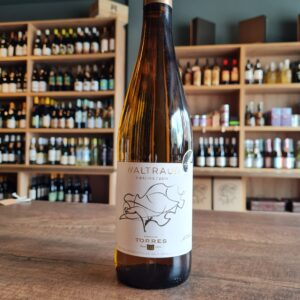 Waltraud is made with the best harvests of Riesling, which is one of the most highly prized aromatic varieties - and rightly so given that it is capable of producing such an elegantly sublime and magnificently fruity wine as this. Waltraud Maczassek, of German nationality, put down roots in the Penedès region when she married Miguel A. Torres. That's why he decided to make a wine in her honour, using German varieties but planted in the Upper Penedes. The wine has a luminous gold color. On the nose reminiscent of orange blossom, jasmine, quince and pineapple. Elegant, firm-bodied and silky, with echoes of spice bread on the finish. Pairs beautifully with oysters and shellfish. Sublime in combination with fish, rice dishes, pasta with mariniere sauce, duck in sweet sauce.
Waltraud is made with the best harvests of Riesling, which is one of the most highly prized aromatic varieties - and rightly so given that it is capable of producing such an elegantly sublime and magnificently fruity wine as this. Waltraud Maczassek, of German nationality, put down roots in the Penedès region when she married Miguel A. Torres. That's why he decided to make a wine in her honour, using German varieties but planted in the Upper Penedes. The wine has a luminous gold color. On the nose reminiscent of orange blossom, jasmine, quince and pineapple. Elegant, firm-bodied and silky, with echoes of spice bread on the finish. Pairs beautifully with oysters and shellfish. Sublime in combination with fish, rice dishes, pasta with mariniere sauce, duck in sweet sauce. -
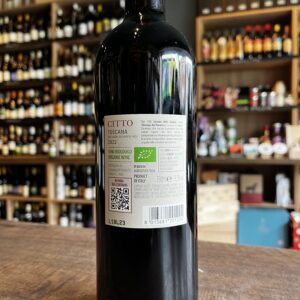
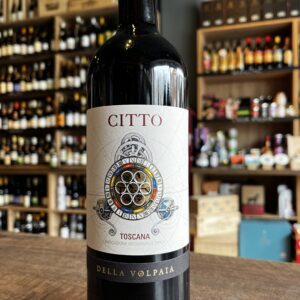 Castello di Volpaia overlooks the village of Radda in Chianti. The town was built in the 11th century as a fortified village on the border of Florence and Sienna. Although only part of the original protective walls and two of its six towers are still standing, the medieval layout and buildings within the village are still intact, making Volpaia one of the best preserved villages of its period. Just as it has been for the last 900 years, the entire village is intimately involved in the production of wine and olive oil. The cellars, bottling plant, barrels and olive press are nestled within the original stone walls that have been carefully restored by owners Carlo Mascheroni and Giovanella Stianti Mascheroni and their children, Nicolo and Federica. The nearly 114 acres of vineyards owned by Castello di Volpaia are at 1,300-2,130 feet above sea level, making Volpaia the highest winery in the Chianti region. The land is comprised of soils consisting largely of sandstone and a sedimentary rock from the Pliocene era. Citto is made from a selection of the best grapes from our IGT vineyards in the Chianti Classico and Maremma areas In the Tuscan dialect Citto means young boy. As from the land in comes from Citto is the young boy of Volpaia.As in the French tradition of the great Bordeaux Chateaux Chateau Mouton Rotschild has Mouton Cadet and Chateau Cheval Blanc has Petit Cheval, the same way Castello di Volpaia has his Citto. Pair with red meats and charcuterie
Castello di Volpaia overlooks the village of Radda in Chianti. The town was built in the 11th century as a fortified village on the border of Florence and Sienna. Although only part of the original protective walls and two of its six towers are still standing, the medieval layout and buildings within the village are still intact, making Volpaia one of the best preserved villages of its period. Just as it has been for the last 900 years, the entire village is intimately involved in the production of wine and olive oil. The cellars, bottling plant, barrels and olive press are nestled within the original stone walls that have been carefully restored by owners Carlo Mascheroni and Giovanella Stianti Mascheroni and their children, Nicolo and Federica. The nearly 114 acres of vineyards owned by Castello di Volpaia are at 1,300-2,130 feet above sea level, making Volpaia the highest winery in the Chianti region. The land is comprised of soils consisting largely of sandstone and a sedimentary rock from the Pliocene era. Citto is made from a selection of the best grapes from our IGT vineyards in the Chianti Classico and Maremma areas In the Tuscan dialect Citto means young boy. As from the land in comes from Citto is the young boy of Volpaia.As in the French tradition of the great Bordeaux Chateaux Chateau Mouton Rotschild has Mouton Cadet and Chateau Cheval Blanc has Petit Cheval, the same way Castello di Volpaia has his Citto. Pair with red meats and charcuterie -
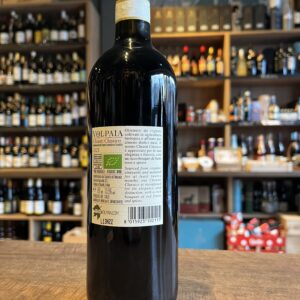
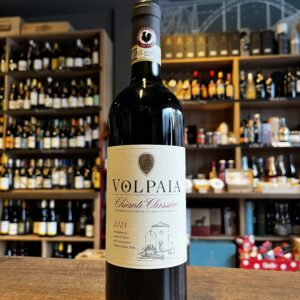 The oldest Italian Wine appellation. The first official document citing the Chianti wine is dated 1398. But it’s only in 1716 that the Granduke of Florence Cosimo III de’ Medici officialy sets the boundaries of the Chianti region where Chianti Classico wine is now produced (but not Chianti wine). Since 2007 Chianti Classico is made with up to 100% of Sangiovese and no more than 20% of other authorized red berry varieties of wich none should exceed 15% alone.
The oldest Italian Wine appellation. The first official document citing the Chianti wine is dated 1398. But it’s only in 1716 that the Granduke of Florence Cosimo III de’ Medici officialy sets the boundaries of the Chianti region where Chianti Classico wine is now produced (but not Chianti wine). Since 2007 Chianti Classico is made with up to 100% of Sangiovese and no more than 20% of other authorized red berry varieties of wich none should exceed 15% alone. -
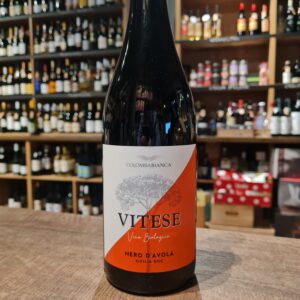 Vitese Nero D'Avola is an organic and vegan wine. It is an intense ruby red with a bouquet very fruity with scents of red berries (cherry, blackberry), fragrant, mineral (graphite), spicy. In the mouth it presents a perfect balance of tannins and acidity, profound taste of great extent and structure, elevated smoothness. Intense, persistent and fine. Pairs well with aperitifs, mature cheese and Ragusano DOP, cold cuts, maialino from the Nebrodi mountains, white and red meats.
Vitese Nero D'Avola is an organic and vegan wine. It is an intense ruby red with a bouquet very fruity with scents of red berries (cherry, blackberry), fragrant, mineral (graphite), spicy. In the mouth it presents a perfect balance of tannins and acidity, profound taste of great extent and structure, elevated smoothness. Intense, persistent and fine. Pairs well with aperitifs, mature cheese and Ragusano DOP, cold cuts, maialino from the Nebrodi mountains, white and red meats. -
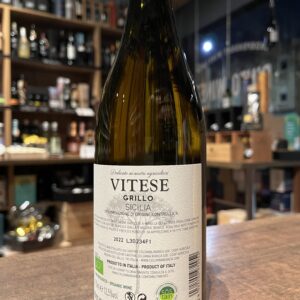
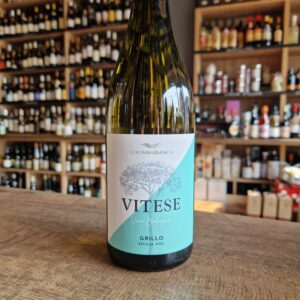 The Colomba Bianca winery was founded in 1970. During the last 10 years, under the guidance of our Chairman Leonardo Taschetta, it has become the biggest wine growing co-operative in Sicily. The company today, can, in fact, count on circa 2480 partners and extends along 7500 hectars of vineyards between the provinces of Trapani, Palermo, Agrigento, Caltanissetta e Ragusa, with 5 wineries distributed in the whole territory. The vineyards can be found in areas which benefit of a vast pedoclimatic diversity, from the low coastal areas up to an altitude of 600 metres above sea level. "We work with the aim that our farmers receive the right compensation for their work. This adds dignity to Sicilian agriculture and to the wines which express at best our territory. It is for this reason that each one of our wines is dedicated to our farmers." - Colomba Bianco Grillo is the flagship of Sicily's indigenous white varieties. Famous for its role in the production of Marsala wines, but has recently come into its own as a varietal making light, fresh and citrussy wines. Ideal with fish first courses, delicate risottos and white meat dishes.
The Colomba Bianca winery was founded in 1970. During the last 10 years, under the guidance of our Chairman Leonardo Taschetta, it has become the biggest wine growing co-operative in Sicily. The company today, can, in fact, count on circa 2480 partners and extends along 7500 hectars of vineyards between the provinces of Trapani, Palermo, Agrigento, Caltanissetta e Ragusa, with 5 wineries distributed in the whole territory. The vineyards can be found in areas which benefit of a vast pedoclimatic diversity, from the low coastal areas up to an altitude of 600 metres above sea level. "We work with the aim that our farmers receive the right compensation for their work. This adds dignity to Sicilian agriculture and to the wines which express at best our territory. It is for this reason that each one of our wines is dedicated to our farmers." - Colomba Bianco Grillo is the flagship of Sicily's indigenous white varieties. Famous for its role in the production of Marsala wines, but has recently come into its own as a varietal making light, fresh and citrussy wines. Ideal with fish first courses, delicate risottos and white meat dishes. -
Out of stock
 Villa Raiano was founded in 1996 in the old factories of the Basso family's oil mill, owner of the company in the Raiano hamlet of the municipality of Serino (AV). Built in 2009, the is structure perfectly integrated into the surrounding environment, surrounded by vineyards and woods. On top of it a panoramic terrace overlooking a wonderful valley carved by the river Sabato which descends proudly from Monte Terminio. This delicious summer wine from the extreme south of Italy makes you long for Italy. A delicious, light-footed summer wine with a sultry taste of honey, flowers and fresh notes of citrus fruits. The Falanghina grape is still relatively unknown in the Ireland, but in Italy a guarantee for a smooth summer wine that can be drunk on it's own or over lunch.The artisan winemakers of Villa Raiano are behind this fantastic Virgo Falanghina, you can expect high quality. In addition, all grapes are picked by hand by Gabrizia and her brothers. And you can taste it! A delicious traditional wine that is made with the utmost care in a sustainable way.
Villa Raiano was founded in 1996 in the old factories of the Basso family's oil mill, owner of the company in the Raiano hamlet of the municipality of Serino (AV). Built in 2009, the is structure perfectly integrated into the surrounding environment, surrounded by vineyards and woods. On top of it a panoramic terrace overlooking a wonderful valley carved by the river Sabato which descends proudly from Monte Terminio. This delicious summer wine from the extreme south of Italy makes you long for Italy. A delicious, light-footed summer wine with a sultry taste of honey, flowers and fresh notes of citrus fruits. The Falanghina grape is still relatively unknown in the Ireland, but in Italy a guarantee for a smooth summer wine that can be drunk on it's own or over lunch.The artisan winemakers of Villa Raiano are behind this fantastic Virgo Falanghina, you can expect high quality. In addition, all grapes are picked by hand by Gabrizia and her brothers. And you can taste it! A delicious traditional wine that is made with the utmost care in a sustainable way. -
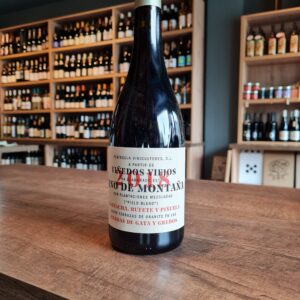 Vinos de Montaña is from a range of mountain wines on high-altitude vineyards in Sierra de Gredos and other historic growing areas in the Sistema Central, the mountain chain that divides the Iberian Peninsula in its Northern and Southern halves. Based mostly on very old Garnacha vines on granite soil, the wines are perfumed, delicate and fresh, displaying the character of their vineyard parcels and villages. This organic wine even though is from a recent created bodega/company, is from old vines revived in the mountain where wine was produced for decades. The Spanish market seemed to picked up on it, as it is becoming increasingly popular with the new enthusiastic wine drinkers generation. Recommended pairing with grilled vegetables, sausages, roasted meats, small game, cured cheeses.
Vinos de Montaña is from a range of mountain wines on high-altitude vineyards in Sierra de Gredos and other historic growing areas in the Sistema Central, the mountain chain that divides the Iberian Peninsula in its Northern and Southern halves. Based mostly on very old Garnacha vines on granite soil, the wines are perfumed, delicate and fresh, displaying the character of their vineyard parcels and villages. This organic wine even though is from a recent created bodega/company, is from old vines revived in the mountain where wine was produced for decades. The Spanish market seemed to picked up on it, as it is becoming increasingly popular with the new enthusiastic wine drinkers generation. Recommended pairing with grilled vegetables, sausages, roasted meats, small game, cured cheeses. -
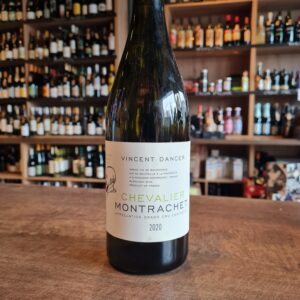
Few winemakers affirm their stellar reputation as convincingly as Vincent Dancer with his ethereal Chevalier Montrachet Grand Cru Blanc 2020. Immaculately crafted in the revered vineyards of France's Burgundy region, it is an unparalleled masterpiece from one of the region's mavericks.
Going against the grain of traditional Burgundian winemaking, Vincent Dancer opts for no battonage and low usage of new oak in producing this Grand Cru Blanc. He relies on sustainable viticulture practices, underscoring nature's ability to produce a near mystical balance of flavours without intervention. This purity of approach culminates in an elegant, nuanced white experienced in this bottle.
-
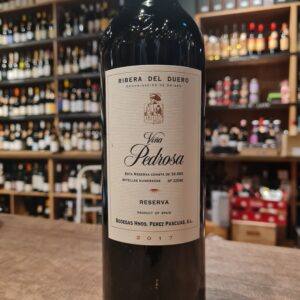 Bodegas Hnos. Perez Pascuas is a winery founded in 1980 and located in Pedrosa de Duero. In its vineyards, Tinta del País or Tempranillo predominate, and they also have a little Cabernet Sauvignon. They produce around 500,000 bottles. They also have a large collection of 3,000 barrels. The barrels are renewed every 3 years to maintain the contribution of compounds from the wood, and the toasted elements that characterise the style of the winery. Viña Pedrosa Reserva is an iconic wine from Pedrosa de Duero. A complex, powerful and highly expressive wine
Bodegas Hnos. Perez Pascuas is a winery founded in 1980 and located in Pedrosa de Duero. In its vineyards, Tinta del País or Tempranillo predominate, and they also have a little Cabernet Sauvignon. They produce around 500,000 bottles. They also have a large collection of 3,000 barrels. The barrels are renewed every 3 years to maintain the contribution of compounds from the wood, and the toasted elements that characterise the style of the winery. Viña Pedrosa Reserva is an iconic wine from Pedrosa de Duero. A complex, powerful and highly expressive wine


